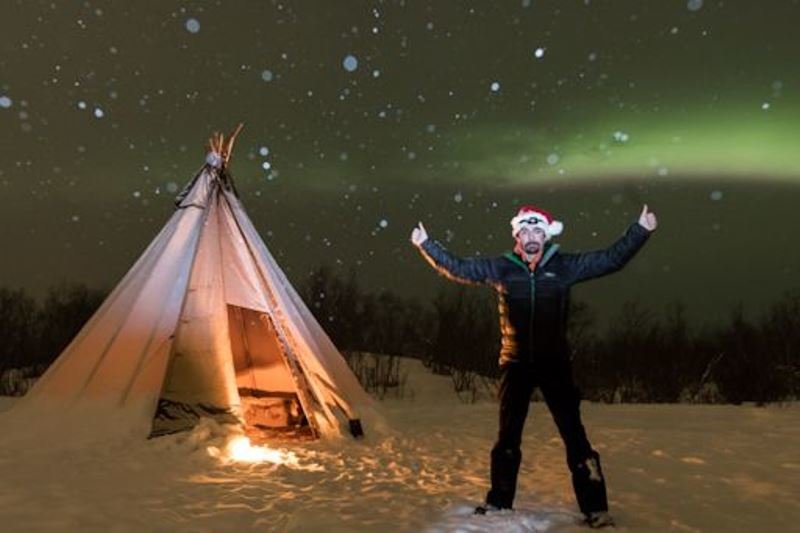Photographer Oliver Wright sends this report from inside the Arctic Circle:
"On Christmas Night 2016, I was standing beneath an intense display of auroras in Abisko, Sweden, when I heard something that sounded like Star Wars blasters."As the lights danced overhead, a series of rat-a-tat 'swooshes' emanated from a nearby set of power lines. "Other bystanders heard it, too," he says. "I rushed closer to the power lines and was able to record a sample using my iPhone."
Wright says that the sounds waxed and waned in sync with the auroras overhead; the brighter the lights, the louder the sounds. Distance mattered, too: "The sounds grew louder as I approached the power lines, and fainter as I moved away."
Wright is a veteran tour guide working for Lights over Lapland, and he has heard these sounds before - "...three times in total. Each time I was standing near power lines." He recalls a particularly intense outburst of "blaster fire" during the powerful St. Patrick's Day Storm of March 2015. In each case, guests and/or friends heard the sounds as well.
What's going on?
"Aurora sounds" have long been a controversial topic. Some researchers insist that they exist only in the imagination of the listener, but there is growing evidence that they are real.
Perhaps the most commonly reported aurora sounds are "hissing" and "crackling," a bit like static on a radio. These are thought to come from electric fields causing spark discharges at the pointy ends of objects like pine needles or even strands of dry hair. Aurora "claps" have been recorded as well. A researcher in Finland spent 15 years studying this phenomenon and published his results in 2012. He found that a temperature inversion layer in the atmosphere about 70 meters above the ground could cause a separation of + and - charges in the air. During strong geomagnetic storms, the charge separation breaks down, causing air to move and a "clap" to be heard.
The sounds Wright recorded may be a result of "electrophonic transduction" - that is, the conversion of electromagnetic energy into mechanical motion. At the time of the Christmas aurora outburst, magnetic fields around Abisko were seething with activity. Physics 101: Unsettled magnetic fields can cause currents to flow in power lines. Strong low-frequency currents can literally shake objects, launching acoustic vibrations into the air. Wright may have recorded the unique sound of those power lines swaying in response to the magnetic storm.
"This discussion feels poignant with the passing of Carrie Fisher as she was my childhood love and the sound is very reminiscent of Star Wars," notes Wright.
Indeed, "Carrie's Crackles" might be a good name for these heavenly sounds. Around Abisko, people will be listening for more as the next magnetic storm approaches. Stay tuned!




Comment: Strange sky sounds, aurora sounds, meteors heard just before they light up the atmosphere... they're all electrophonically transduced. Question is; what has changed in the atmosphere/environment to make what were once inaudible... audible?